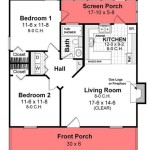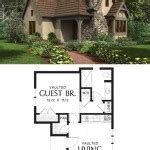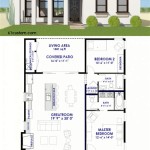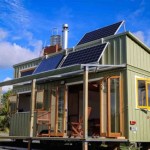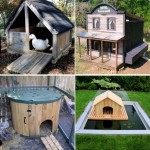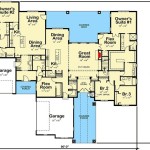A chalet house plan refers to a detailed blueprint or architectural design that outlines the structure and layout of a chalet-style home. Chalets are typically characterized by their charming Alpine architectural style featuring pitched roofs with wide eaves, exposed wooden beams, and cozy interiors with fireplaces.
The primary function of a chalet house plan is to provide a guide for the construction and renovation of chalet-style homes. These plans typically include floor plans, elevations, sections, and details that specify the dimensions, materials, and construction techniques to be used. By following a well-designed chalet house plan, builders can ensure that the home is structurally sound, energy-efficient, and aesthetically pleasing.
In the following sections, we will delve deeper into the key elements of chalet house plans, explore different design variations, and discuss the benefits of choosing a chalet-style home.
When considering a chalet house plan, there are several important points to keep in mind:
- Alpine Charm: Captures the essence of traditional Alpine architecture.
- Pitched Roofs: Steeply sloping roofs with wide eaves.
- Exposed Beams: Wooden beams add character and warmth.
- Cozy Interiors: Fireplaces and inviting spaces create a comfortable atmosphere.
- Energy Efficiency: Modern designs prioritize sustainability and energy savings.
- Customizable: Plans can be tailored to specific needs and preferences.
- Floor Plans: Optimize space utilization and functionality.
- Elevations: Depict the exterior appearance of the chalet.
- Sections: Show the interior layout and structural details.
- Details: Specify materials, finishes, and construction techniques.
Considering these points ensures that your chalet house plan meets your needs and creates a charming and functional Alpine-style home.
Alpine Charm: Captures the essence of traditional Alpine architecture.
Chalet house plans embody the charm and character of traditional Alpine architecture, renowned for its distinctive features and cozy ambiance. The following key elements contribute to the Alpine charm of these homes:
- Steeply Pitched Roofs: A defining characteristic of Alpine chalets, steeply pitched roofs provide protection from snow and rain while adding a touch of rustic elegance. The wide eaves extend beyond the walls, creating sheltered balconies and porches.
- Exposed Wooden Beams: Exposed wooden beams and rafters are a hallmark of Alpine architecture. These structural elements lend warmth and character to the interior, creating a sense of authenticity and connection to nature.
- Cozy Interiors: Chalets are known for their inviting and cozy interiors, often featuring fireplaces as a central gathering point. Warm wood paneling, soft textiles, and ambient lighting contribute to the comfortable and welcoming atmosphere.
- Stone and Wood Facades: Traditional Alpine chalets often incorporate stone and wood into their facades, reflecting the natural surroundings. Stone foundations and lower levels provide stability and durability, while wooden upper stories add warmth and texture.
By incorporating these elements into their designs, chalet house plans capture the essence of Alpine architecture, creating homes that are both charming and functional.
Pitched Roofs: Steeply sloping roofs with wide eaves.
Pitched roofs are a defining characteristic of chalet house plans, contributing to their charm and functionality. These steeply sloping roofs, often with a 45-degree angle or more, serve several important purposes:
- Protection from the Elements: The steep pitch allows snow and rain to easily slide off the roof, preventing accumulation and potential damage to the structure. The wide eaves extend beyond the walls, providing additional protection from the elements and creating sheltered balconies and porches.
- Efficient Water Drainage: The steep slope ensures efficient water drainage, preventing water from pooling on the roof and causing leaks or damage. This is particularly important in areas with heavy rainfall or snowfall.
- Increased Headroom: The high pitch creates more headroom in the upper floors, allowing for spacious and airy living areas. This is especially beneficial in smaller chalets, where maximizing space is crucial.
- Aesthetic Appeal: Pitched roofs add a touch of rustic elegance to chalet house plans. The varying angles and slopes create visual interest and complement the natural surroundings, making them a popular choice for mountain and woodland settings.
Overall, the steeply sloping roofs with wide eaves in chalet house plans provide both practical and aesthetic benefits, contributing to the charm and functionality of these homes.
Exposed Beams: Wooden beams add character and warmth.
Exposed wooden beams and rafters are a hallmark of chalet house plans, adding character and warmth to the interior spaces. These structural elements play several important roles:
- Aesthetic Appeal: Exposed beams create a sense of rustic charm and authenticity. The natural beauty of the wood adds warmth and texture to the interior, creating a cozy and inviting ambiance.
- Structural Support: The beams serve as load-bearing elements, providing structural support to the roof and upper floors. Their visible presence showcases the craftsmanship and engineering behind the chalet’s construction.
- Space Definition: Beams can be used to define different areas within an open-plan space. For example, they can separate the living room from the dining area or create a cozy nook for reading or relaxation.
- Height and Volume: Exposed beams draw the eye upward, creating a sense of height and volume in the space. This is particularly effective in chalets with high ceilings and large windows, where the beams accentuate the spaciousness and grandeur.
By incorporating exposed wooden beams into the design, chalet house plans create interiors that are both aesthetically pleasing and structurally sound, adding to the overall charm and character of these homes.
Cozy Interiors: Fireplaces and inviting spaces create a comfortable atmosphere.
Chalet house plans prioritize creating cozy and inviting interiors that foster a sense of comfort and well-being. Two key elements that contribute to this cozy ambiance are fireplaces and inviting spaces:
- Fireplaces: Fireplaces are often the focal point of chalet interiors, providing both warmth and a sense of gathering. They create a cozy and welcoming atmosphere, inviting residents and guests to relax and unwind. The flickering flames and gentle crackling of the fire add a touch of magic to the space, enhancing its overall charm.
- Inviting Spaces: Chalet house plans incorporate inviting spaces that encourage relaxation and socialization. Open-plan living areas with comfortable seating arrangements and large windows that flood the space with natural light are common features. These spaces seamlessly connect the interior with the surrounding nature, creating a sense of harmony and tranquility.
- Warm Materials and Finishes: Chalets often feature warm and natural materials such as wood, stone, and leather, which contribute to the cozy ambiance. These materials add a sense of authenticity and rustic charm, creating a welcoming and comfortable environment.
- Ambient Lighting: Lighting plays a crucial role in creating a cozy atmosphere. Chalet house plans incorporate a combination of natural and artificial lighting to enhance the ambiance. Large windows allow ample natural light to fill the space, while soft and warm artificial lighting creates a relaxing and inviting atmosphere in the evenings.
By incorporating these elements, chalet house plans create interiors that are not only aesthetically pleasing but also provide a comfortable and welcoming living environment, making them ideal for those seeking a cozy and relaxing home.
Energy Efficiency: Modern designs prioritize sustainability and energy savings.
Modern chalet house plans place a strong emphasis on energy efficiency, incorporating sustainable design principles and technologies to minimize environmental impact and reduce energy consumption.
- Insulation and Air Sealing: Proper insulation and air sealing are crucial for energy efficiency. Modern chalet house plans include high-performance insulation materials in walls, ceilings, and floors, as well as airtight construction techniques to minimize heat loss and air infiltration.
- Energy-Efficient Windows and Doors: Windows and doors are major sources of heat loss in buildings. Chalet house plans specify energy-efficient windows and doors that feature double or triple glazing, low-emissivity coatings, and tight seals to reduce heat transfer.
- Renewable Energy Sources: Many modern chalet house plans incorporate renewable energy sources such as solar panels and geothermal heating systems to generate clean and sustainable energy. Solar panels convert sunlight into electricity, while geothermal systems use the earth’s natural heat to provide heating and cooling.
- Energy-Efficient Appliances and Lighting: Energy-efficient appliances and lighting fixtures can significantly reduce energy consumption. Chalet house plans encourage the use of Energy Star-rated appliances and LED lighting, which consume less energy and have longer lifespans.
By incorporating these energy-efficient features, modern chalet house plans create homes that are not only comfortable and stylish but also environmentally responsible and cost-effective to operate.
Customizable: Plans can be tailored to specific needs and preferences.
One of the key advantages of chalet house plans is their customizable nature. These plans can be tailored to meet the specific needs and preferences of individual homeowners, ensuring that the final product is a unique and personalized living space.
Flexibility in Design: Chalet house plans offer a great deal of flexibility in terms of design. Homeowners can choose from a range of architectural styles, from traditional to contemporary, and customize the layout and features to suit their lifestyle and preferences. This flexibility allows for the creation of truly unique and bespoke homes.
Adaptable Floor Plans: The floor plans of chalet house plans can be easily adapted to accommodate different family sizes and living arrangements. For example, the number of bedrooms, bathrooms, and living areas can be adjusted to meet specific requirements. This adaptability ensures that the chalet house plan can be tailored to the specific needs of each homeowner.
Personalized Features: Chalet house plans allow for the incorporation of personalized features that reflect the homeowner’s taste and preferences. This can include the addition of amenities such as home offices, wine cellars, or outdoor living spaces. By customizing the plan to include these features, homeowners can create a chalet that is truly their own.
The customizable nature of chalet house plans makes them an ideal choice for homeowners who are looking for a home that is both unique and functional. By working with an architect or designer, homeowners can create a chalet house plan that perfectly suits their needs and preferences.
Floor Plans: Optimize space utilization and functionality.
Floor plans are a crucial aspect of chalet house plans, as they determine the layout and functionality of the living space. Well-designed floor plans optimize space utilization and functionality, ensuring that the chalet is both comfortable and practical.
Efficient Use of Space: Chalet house plans are designed to make efficient use of space, maximizing the available area while maintaining a sense of spaciousness. This is achieved through careful planning of room sizes, circulation paths, and storage solutions. By eliminating wasted space and utilizing every nook and cranny, chalet floor plans create homes that are both comfortable and functional.
Functional Zones: Floor plans in chalet house plans often incorporate functional zones to create a well-organized and efficient living environment. These zones typically include public areas such as the living room, dining room, and kitchen, as well as private areas such as bedrooms, bathrooms, and study rooms. By separating these zones, chalet floor plans ensure that each space can be used effectively and without disruption.
Flow and Circulation: The flow and circulation within a chalet house plan is carefully considered to create a smooth and efficient movement throughout the home. Wide hallways, open doorways, and well-placed staircases allow for easy access to all areas of the chalet, reducing congestion and creating a comfortable living environment.
Overall, the floor plans in chalet house plans are designed to optimize space utilization and functionality, resulting in homes that are both comfortable and practical. By carefully planning the layout and incorporating functional zones and efficient circulation, these plans create living spaces that meet the needs of modern families.
Elevations: Depict the exterior appearance of the chalet.
Elevations are an essential component of chalet house plans, as they provide detailed drawings of the chalet’s exterior appearance from different sides. These drawings allow homeowners and builders to visualize the finished product and ensure that the chalet’s design meets their aesthetic and functional requirements.
- Front Elevation: The front elevation depicts the main facade of the chalet, showcasing its architectural style, entryway, and overall proportions. It is particularly important for establishing the chalet’s curb appeal and ensuring that it complements the surrounding environment.
- Rear Elevation: The rear elevation provides a view of the back of the chalet, including the design of the rear facade, outdoor living areas, and relationship to the landscape. It helps homeowners visualize how the chalet will integrate with its surroundings and how they can maximize outdoor space.
- Side Elevations: Side elevations show the chalet’s profile from both sides, providing insights into the rooflines, window placement, and overall massing of the building. They are crucial for understanding the chalet’s volumetric composition and how it relates to neighboring structures.
- Cross-Sections: Cross-sections are vertical drawings that cut through the chalet at different points, revealing the interior layout, ceiling heights, and relationship between different levels. They provide a comprehensive understanding of the chalet’s spatial organization and how it functions as a three-dimensional space.
Overall, elevations play a vital role in chalet house plans, as they visually represent the chalet’s exterior appearance and provide valuable information about its design, proportions, and relationship to the surroundings.
Sections: Show the interior layout and structural details.
Sections are another essential component of chalet house plans, providing detailed drawings that cut through the chalet at different points to reveal the interior layout and structural details. These drawings are crucial for understanding the chalet’s three-dimensional composition and how it functions as a living space.
- Interior Layout: Sections clearly illustrate the interior layout of the chalet, showing the arrangement of rooms, hallways, staircases, and other spaces. This allows homeowners and builders to visualize the flow of movement within the chalet and ensure that the layout meets their functional requirements.
- Ceiling Heights: Sections also indicate the ceiling heights of different areas within the chalet. This information is important for ensuring that there is sufficient headroom and a sense of spaciousness throughout the home. It also helps in planning the placement of furniture and fixtures.
- Structural Details: Sections provide detailed information about the structural elements of the chalet, such as the foundation, framing, and roof structure. These drawings help builders understand how the chalet is constructed and ensure that it meets building codes and safety standards.
- Relationship Between Levels: Sections clearly show the relationship between different levels of the chalet, including the basement, ground floor, and upper floors. This allows homeowners and builders to visualize the vertical circulation within the chalet and plan for staircases and elevators.
Overall, sections are an indispensable part of chalet house plans, providing valuable insights into the interior layout, structural details, and overall functionality of the chalet. By carefully studying these drawings, homeowners and builders can make informed decisions about the design and construction of their chalet.
Details: Specify materials, finishes, and construction techniques.
The details section of chalet house plans provides detailed specifications for the materials, finishes, and construction techniques to be used in the construction of the chalet. This information is crucial for ensuring that the chalet is built to the highest standards of quality, durability, and aesthetic appeal.
Materials: The details section specifies the types of materials to be used for different elements of the chalet, including the foundation, framing, exterior cladding, roofing, windows, and doors. The choice of materials will depend on factors such as the climate, budget, and desired aesthetic. For example, a chalet in a cold climate may use insulated concrete forms for the foundation and walls to provide superior thermal performance, while a chalet in a warmer climate may use timber framing for its lightweight and breathable qualities.
Finishes: The details section also specifies the finishes to be used for both the interior and exterior of the chalet. This includes the type of paint or stain for the exterior cladding, the flooring materials for each room, and the finishes for the kitchen and bathrooms. The choice of finishes will depend on the desired aesthetic and the intended use of the space. For example, a chalet intended for year-round living may use durable and easy-to-clean finishes, while a chalet intended for occasional use as a vacation home may use more luxurious and decorative finishes.
Construction Techniques: The details section also provides information about the construction techniques to be used in the building of the chalet. This includes the type of foundation to be used, the framing method, the roofing system, and the insulation techniques. The choice of construction techniques will depend on factors such as the climate, the structural requirements of the chalet, and the desired level of energy efficiency. For example, a chalet in a cold climate may use a deep foundation system to protect against frost heave, while a chalet in a warm climate may use a shallow foundation system.
Overall, the details section of chalet house plans provides comprehensive information about the materials, finishes, and construction techniques to be used in the construction of the chalet. This information is essential for ensuring that the chalet is built to the highest standards of quality, durability, and aesthetic appeal.










Related Posts

